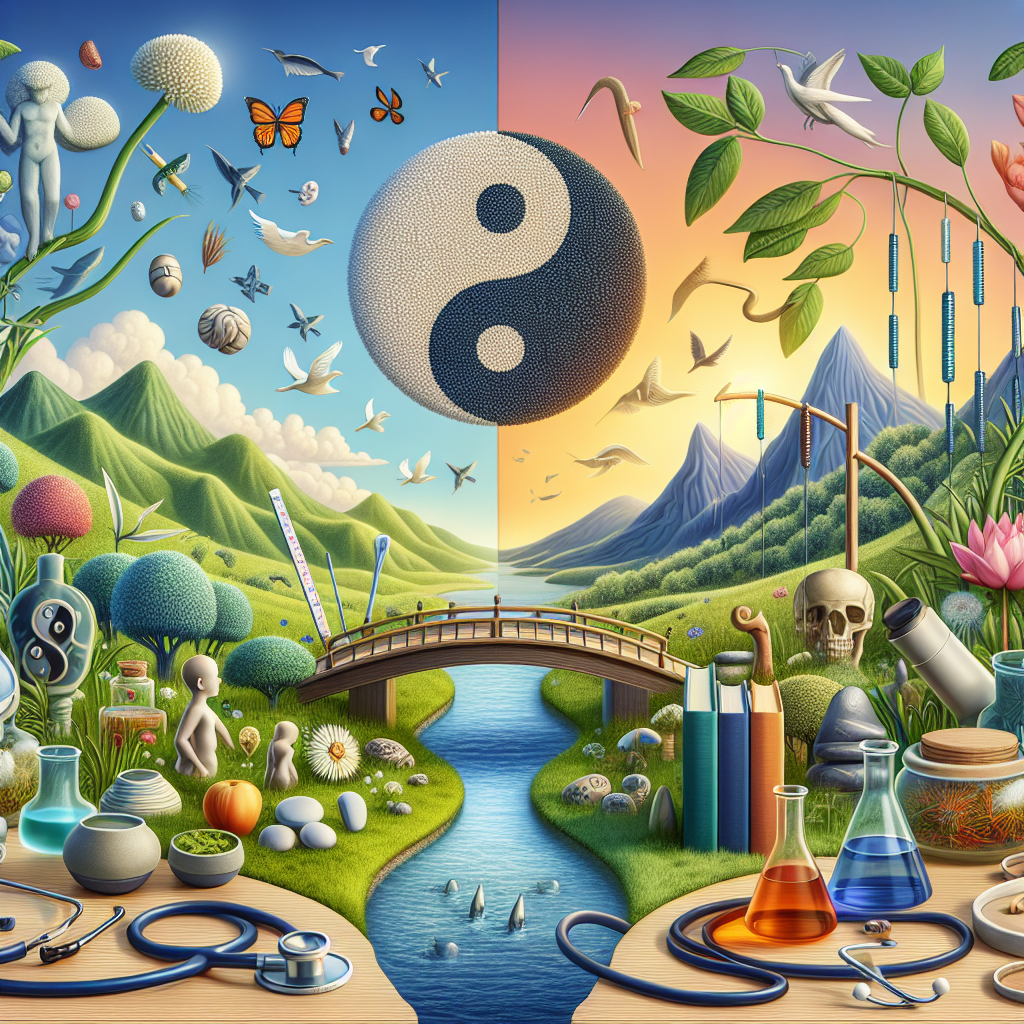Bridging Worlds: Integrative Approaches to Stroke Recovery Through Western Medicine and Eastern Traditions
Stroke, a sudden interruption of blood supply to the brain, is a leading cause of death and disability worldwide. Its aftermath often leaves survivors grappling with a myriad of physical, cognitive, and emotional challenges. As the global health community seeks to enhance recovery outcomes, a growing interest in combining Western medical approaches with Eastern traditional practices has emerged. This integrative approach offers the potential for more holistic and effective rehabilitation strategies.
Western Medicine: Evidence-Based and Technologically Advanced
Western medicine, also known as allopathic medicine, is grounded in scientific research, clinical trials, and technological advancements. The primary goal in stroke recovery under this paradigm is to minimize damage and restore function.
1. Acute Care and Early Intervention:
– Clot-Dissolving Medications: For ischemic strokes, tissue plasminogen activator (tPA) is often administered to dissolve clots and restore blood flow.
– Mechanical Thrombectomy: In certain cases, a surgical procedure is performed to remove the clot.
– Rehabilitation Programs: These begin as soon as the patient is stable, often involving a multidisciplinary team including neurologists, physiotherapists, occupational therapists, and speech therapists.
2. Rehabilitation Techniques:
– Physical Therapy: Focuses on improving mobility, strength, and coordination through exercises and mobility aids.
– Occupational Therapy: Helps patients regain skills needed for daily activities, often employing adaptive strategies and tools.
– Speech and Language Therapy: Addresses communication issues and swallowing difficulties.
– Neuroplasticity-Based Interventions: Techniques like constraint-induced movement therapy (CIMT) and robot-assisted therapy stimulate the brain to form new neural connections.
3. Technological Innovations:
– Telemedicine: Provides remote access to rehabilitation services, which is particularly valuable for patients in rural areas.
– Wearable Devices: Monitor vital signs and track rehabilitation progress.
– Virtual Reality (VR): Offers immersive environments for physical and cognitive exercises.
Eastern Traditions: Holistic and Restorative
Eastern medicine, including practices from Traditional Chinese Medicine (TCM), Ayurveda, and other holistic approaches, emphasizes balance, energy flow, and the interconnection of body, mind, and spirit. The strategies in these traditions aim to restore harmony and promote self-healing.
1. Traditional Chinese Medicine (TCM):
– Acupuncture: Involves inserting fine needles into specific points on the body to stimulate energy flow (Qi). Studies suggest that acupuncture can improve motor function and reduce spasticity in stroke patients.
– Herbal Medicine: Utilizes plant-based remedies to enhance recovery. For example, Bu Yang Huan Wu Tang, a TCM formula, is believed to promote blood circulation and neuroprotection.
– Qigong and Tai Chi: These gentle exercises improve balance, coordination, and mental focus, which are crucial for stroke recovery.
– Cupping and Moxibustion: Techniques aimed at enhancing blood flow and removing stagnation.
2. Ayurveda:
– Panchakarma Therapy: A detoxification and rejuvenation process involving five treatments to cleanse the body and mind.
– Medicinal Herbs: Ashwagandha, Brahmi, and Turmeric are commonly used for their neuroprotective and anti-inflammatory properties.
– Yoga and Meditation: Promote mental clarity, reduce stress, and improve physical function.
Bridging the Worlds: An Integrative Approach
Combining Western and Eastern approaches can provide a comprehensive framework for stroke recovery. The strengths of each tradition can complement the other, offering a more personalized and holistic rehabilitation plan.
1. Complementary Therapies:
– Integrative Clinics: Facilities that offer both Western medical treatments and Eastern practices, allowing for a seamless blend of therapies.
– Personalized Treatment Plans: Tailored approaches that consider the patient’s unique needs, preferences, and cultural background.
2. Case Studies and Clinical Evidence:
– Research Integration: Increasingly, studies are investigating the efficacy of combining therapies. For instance, acupuncture alongside conventional rehabilitation has shown promising results in enhancing motor recovery.
– Patient-Centered Care: Incorporating patient feedback and experiences to refine integrative approaches.
3. Challenges and Considerations:
– Standardization and Regulation: Ensuring the safety and efficacy of Eastern practices through rigorous testing and quality control.
– Education and Training: Equipping healthcare professionals with knowledge of both traditions to facilitate collaboration and mutual respect.
– Accessibility and Affordability: Making integrative therapies available and affordable for all patients.
The Future of Stroke Recovery
As the global health community continues to explore integrative approaches, the potential for improved stroke recovery outcomes grows. Bridging Western medicine’s technological advancements with Eastern traditions’ holistic practices offers a promising path forward.
1. Innovative Research:
– Interdisciplinary Studies: Collaborative research that brings together neurologists, traditional healers, and rehabilitation specialists.
– Clinical Trials: Rigorous testing of integrative therapies to establish evidence-based practices.
2. Policy and Advocacy:
– Healthcare Policies: Encouraging policies that support integrative healthcare models.
– Public Awareness: Educating patients and families about the benefits and options of integrative therapies.
3. Global Collaboration:
– Cross-Cultural Exchange: Sharing knowledge and best practices between Western and Eastern healthcare systems.
– International Conferences: Platforms for professionals to discuss and disseminate integrative approaches.
Conclusion
Stroke recovery is a complex journey that requires a multifaceted approach. By embracing the strengths of both Western medicine and Eastern traditions, we can create more effective, holistic, and personalized rehabilitation strategies. This integrative approach not only enhances physical recovery but also supports mental and emotional well-being, ultimately leading to a better quality of life for stroke survivors. As we bridge these worlds, we pave the way for a future where diverse medical traditions work together in harmony, offering hope and healing to those in need.

